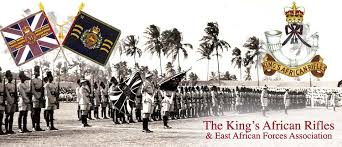It was first proposed to set up a University in Leiceter in1880. Dr Astley Clarke (1870-1945), who was born and educated in Leicester, the son of a prominent local surgeon, who became Honorary Consulting Physician and Consulting Radiologist at Leicester Royal Infirmary, became President of the Leicester Literary and Philosophical Society.that the idea came up again. He worked hard throughout his year in office as President of the Soceity to generate interest and promises of support. Everything was looking very promising - until war broke out.
As he had been a part-time soldier since 1910, Astley Clarke served in WW1 as a Lieutenant Colonel in the Royal Army Medical Corps and was swiftly appointed Administrator of the 5th Northern General Hospital, an RAMC unit which took up residence in the former Leicestershire and Rutland Lunatic Asylum next to Victoria Park. Members of the Leicester Literary and Philosophical Society dispersed to military, naval, governmental or medical duties, or devoted their fund-raising work to the war effort.
Three years later, despite there still being no end in sight to the 'war to end all wars', the idea of a Leicester University College was raised once again. On 14 November 1917 - a few days after the Battle of Passchendaele, a few days before the Battle of Cambrai - the “Leicester Daily Post” told its readers that the city should have “more than a mere artistic war memorial.” A better memorial to lives lost and ruined”, argued the paper, “would be the establishment of a University College so that the next generation might achieve better things than their forefathers.” Furthermore, a ready made site presented itself.
During the course of the war, the 5th Northern General expanded from this base hospital building to become a local network of more than 60 locations including North Evington War Hospital, Knighton House Hospital, Gilcross Hospital and the Leicester Royal Infirmary. Admiral Beatty, a naval hero for his role in the Battle of Jutland, donated his Leicestershire home Brooksby Hall as part of the 5th Northern General, staffed by nurses from the Voluntary Aid Detachment.
In total, there were beds in Leicestershire for 111 officers and 2,487 other ranks, through which passed more than 95,000 casualties. Of these men, 514 deaths were recorded, 286 of whom are buried across from the University in Welford Road Cemetery. The Commanding Officer of the hospital in 1917 was Lt. Col. Louis N Harrison.
After the Armistice, the fund-raising campaign took off in earnest, spurred on by a determination to create a 'living memorial' to those who had given their lives.
Leicester was granted City status in 1919 by King George V, in recognition of its industries' contribution to the British war effort.
By January 1920, just 14 months after Astley Clarke's first bundle of five pound notes, the total stood at £100,000, including numerous donations by grieving parents and wives in memory of husbands and sons who would never return to Leicester. The 5th Northern General Hospital had finally vacated the old lunatic asylum buildings which were promptly bought by local businessman Thomas Fielding Johnson, and just as promptly donated to the council as a site for the University College.
The Arch of Remembrance is a First World War Grade-I listed Arch of Remembrance situated in Victoria Park, Leicester, It was nveiled in 1925 and is close to the University campus. The memorial was commissioned and designed by Sir Edwin Lutyens.
NOTES; Astley Vavasour Clarke (1870-1945) was born in Leicester and educated at Wyggeston School, Oakham School, in Heidelberg and Bonn.
Sir Edwin Landseer Lutyens OM KCIE PRA FRIBA (1869 – 1944) was a British architect. Before the end of the First World War, he was appointed one of three principal architects for the Imperial War Graves Commission (now Commonwealth War Graves Commission) and was involved with the creation of many monuments to commemorate the dead.
Sources: University Challenge programme and
https://le.ac.uk/about/history/campus-history/great-war
https://le.ac.uk/about/history/campus-history/military-hospital
https://le.ac.uk/news/2021/september/living-memorial







